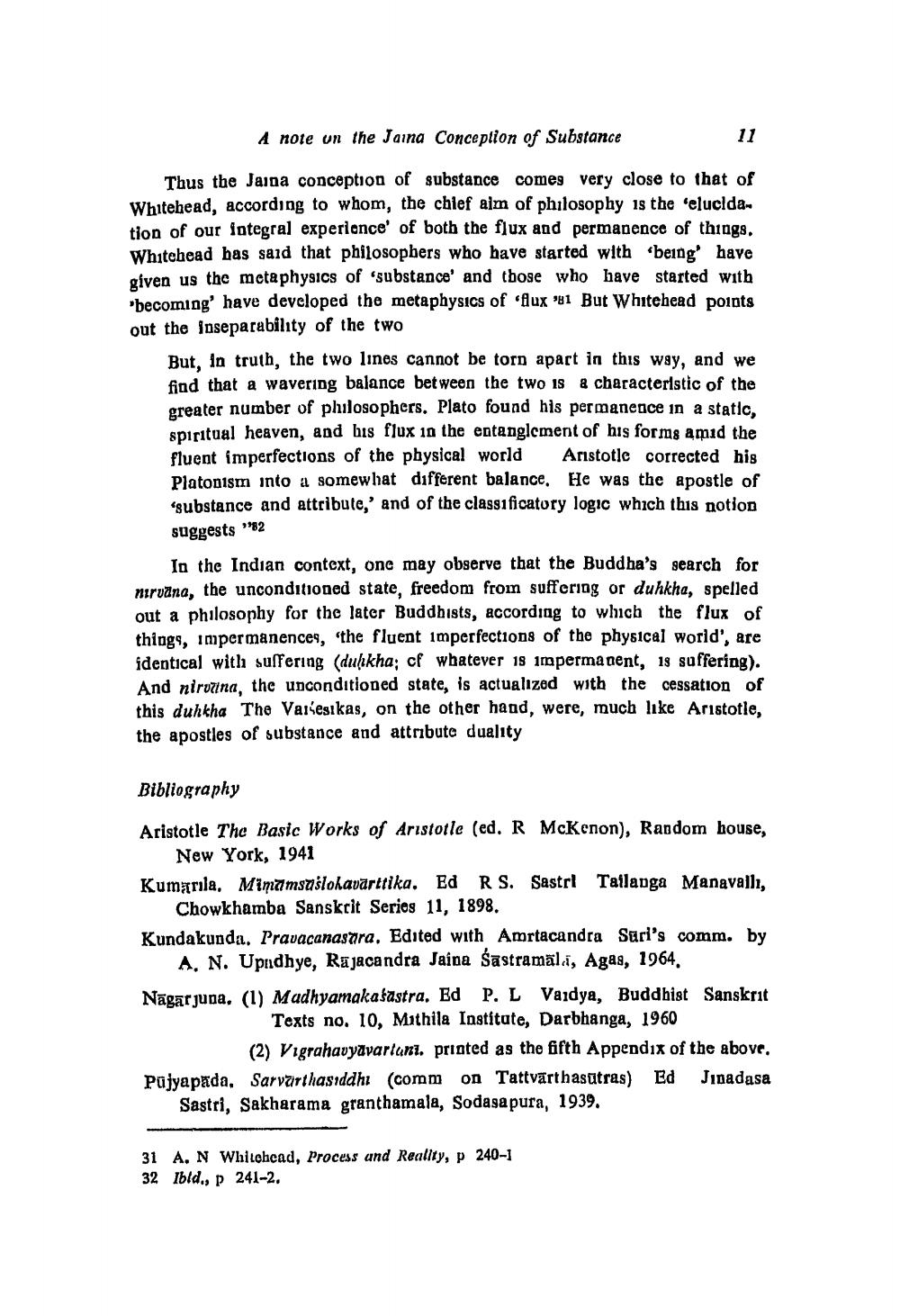________________
A note on the Jaina Conception of Substance
Thus the Jaina conception of substance comes very close to that of Whitehead, according to whom, the chief aim of philosophy is the elucida tion of our integral experience' of both the flux and permanence of things. Whitehead has said that philosophers who have started with 'being' have given us the metaphysics of 'substance' and those who have started with "becoming' have developed the metaphysics of 'flux 81 But Whitehead points out the inseparability of the two
11
But, in truth, the two lines cannot be torn apart in this way, and we find that a wavering balance between the two is a characteristic of the greater number of philosophers. Plato found his permanence in a static, spiritual heaven, and his flux in the entanglement of his forms amid the fluent imperfections of the physical world Aristotle corrected his Platonism into a somewhat different balance. He was the apostle of 'substance and attribute,' and of the classificatory logic which this notion suggests "82
In the Indian context, one may observe that the Buddha's search for nirvana, the unconditioned state, freedom from suffering or duhkha, spelled out a philosophy for the later Buddhists, according to which the flux of things, impermanences, the fluent imperfections of the physical world', are identical with suffering (duḥkha; cf whatever 18 impermanent, 18 suffering). And nirvana, the unconditioned state, is actualized with the cessation of this duhkha The Vai esikas, on the other hand, were, much like Aristotle, the apostles of substance and attribute duality
Bibliography
Aristotle The Basic Works of Aristotle (ed. R McKenon), Random house, New York, 1941
Kumarila. Mimamsaslohavarttika. Ed R S. Sastri Tailanga Manavallı, Chowkhamba Sanskrit Series 11, 1898.
Kundakunda. Pravacanastra. Edited with Amrtacandra Suri's comm. by A. N. Upadhye, Rajacandra Jaina Sastramälä, Agas, 1964.
Nagarjuna, (1) Madhyamakasastra. Ed P. L Vaidya, Buddhist Sanskrit Texts no. 10, Mithila Institute, Darbhanga, 1960
(2) Vigrahavyavartani. printed as the fifth Appendix of the above. Pujyapada, Sarvarthasiddhi (comm on Tattvärthasutras) Ed Jinadasa Sastri, Sakharama granthamala, Sodasapura, 1939.
31 A. N Whitehead, Process and Reality, p 240-1
32 Ibid., p 241-2.




